
Thanks and gratitude to all who mother, nurture, tend to and care for the health, growth and well-being of others. May they feed you today!

making food simpler

Thanks and gratitude to all who mother, nurture, tend to and care for the health, growth and well-being of others. May they feed you today!

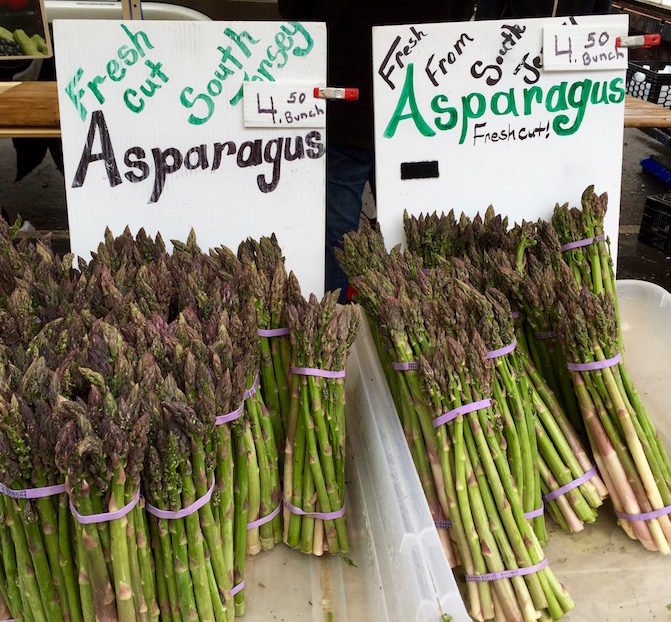
We can create beautiful plates of food when cooking but it is more important that the dishes be tasty and nutritious. When they also look good, that is a side benefit. Any plate you present will be attractive if you use enough fresh, seasonal vegetables and don’t overcook them. Our family meals now incorporate many more vegetables than anything else. Sometimes we eat vegetarian, sometimes vegan, sometimes omnivorous. As diet and nutrition fads come and go, I try to stay focused on vegetables as the largest portion on our plates, supplemented by smaller amounts of fats, proteins and whole grains.
Using what is in season is an easy way to plan what to make for dinner. If you take a minute to think about what is fresh locally, the options become clearer and more limited. It is spring now so what is fresh in the market is asparagus, fiddlehead ferns, artichokes(from California), green garlic and ramps, soon to be followed by sugar snap and shell peas, radishes and spring onions.
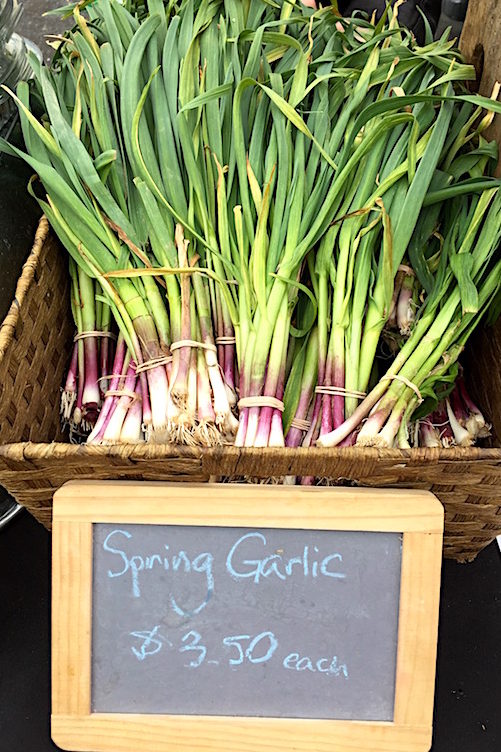
With these seasonal vegetables in mind, you can start to think about making a simple pasta, risotto, quiche or frittata with any of these. When you add a side salad, you have an easy spring supper. With or without a grain or potato, roasted asparagus, sautéed sugar snaps or radishes or steamed fiddleheads, asparagus, artichokes or peas accompanying a piece of baked or broiled fish, chicken, tempeh or tofu constitute a satisfying simple meal. If you aren’t serving a starch, just enhance your plate with a second vegetable or salad.
It really is that easy.
SAUTEED ASPARAGUS AND GREEN GARLIC
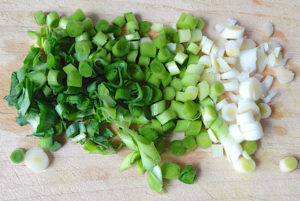
Heat a wide skillet on medium high heat.
Add oil and, when hot, add green garlic and salt and sauté one minute.
Add asparagus pieces and sauté, stirring, over medium heat about 4 minutes, depending on the thickness of the asparagus, and add a splash of water if it all starts to stick.
As soon as you can pierce a piece of asparagus easily with a fork, take off heat and put in a serving dish.
Sprinkle with lemon zest.
Note – If you don’t have green garlic, simply use 2-3 cloves of the ordinary stuff, minced.
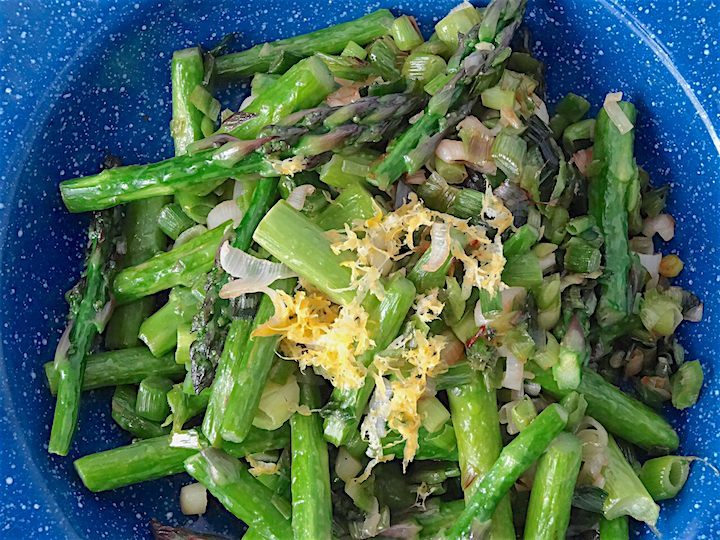
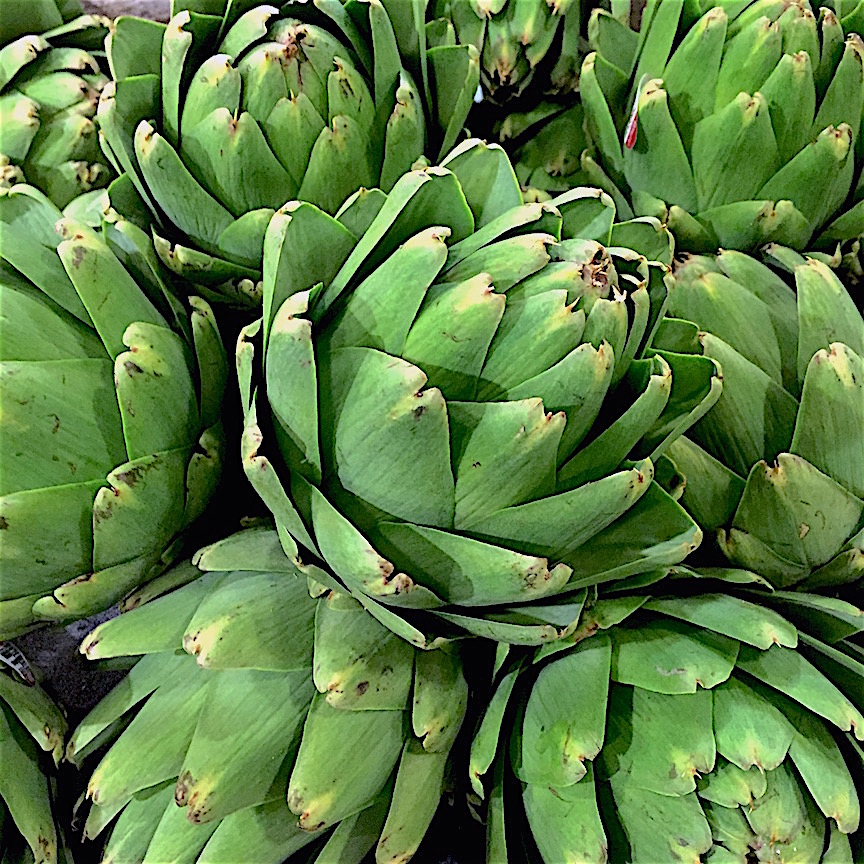
When artichokes and asparagus are as beautiful and fresh as they are right now, I want to make them often. A steamed artichoke is a treat with melted butter but is elevated to another state with a scrumptious dip. Hollandaise sauce, a traditional accompaniment to both artichokes and asparagus, has alway been too rich for me. Plus, unless I’ve met the chicken whose eggs I’m eating, anything with raw egg in it makes me feel squeamish.
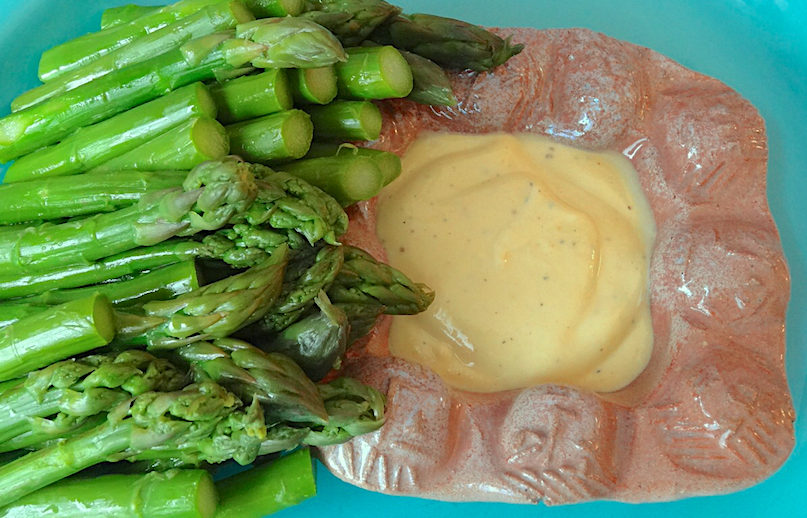
Growing up, we dipped our artichoke leaves in a homemade mustardy vinaigrette with chopped, hard boiled eggs. My mother clipped 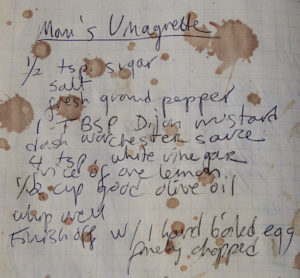 the recipe from a monthly newsletter more than 40 years ago and still pulls it out out every spring to sauce artichokes. When I went to copy down the recipe decades ago, it was already worn and speckled with drops of oil and now my own copy looks much the same. The vinaigrette in the newsletter came from Paul Steindler, a Czech chef who ran La Popette restaurant in New York.
the recipe from a monthly newsletter more than 40 years ago and still pulls it out out every spring to sauce artichokes. When I went to copy down the recipe decades ago, it was already worn and speckled with drops of oil and now my own copy looks much the same. The vinaigrette in the newsletter came from Paul Steindler, a Czech chef who ran La Popette restaurant in New York.
For years I made Mom’s recipe just as she had prepared it, but then it occurred to me that a few changes might suit me better. I swapped in apple cider vinegar for white distilled, replaced the white sugar with maple syrup and went back to the Dijon mustard that was in the original (not the bright yellow “French’s” hot dog mustard we used at home). The newsletter recipe called for half a cup of olive oil but that made the vinaigrette too rich for my taste and tolerance. I cut the oil to 2 tablespoons and instead of adding a chopped egg at the end, I added 2 hard boiled eggs and blended them completely to thicken it all into an unctuous and tangy dip, similar to but lighter than the original.
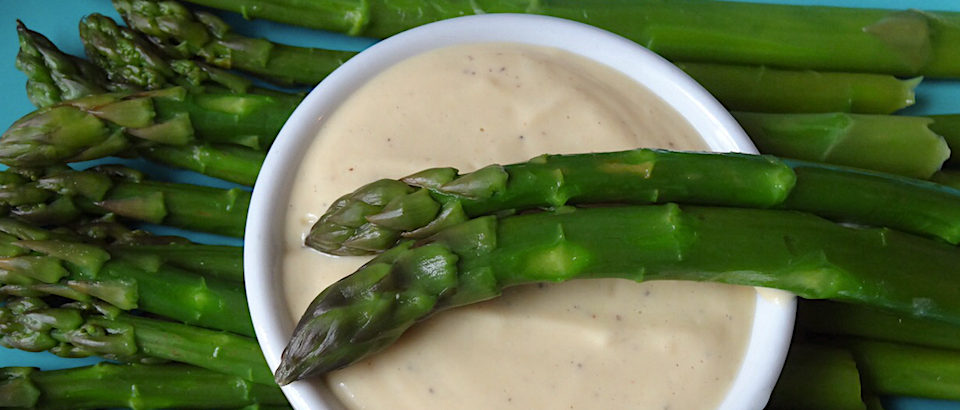
We still celebrate spring with artichokes and asparagus dipped in this delicious mustardy vinaigrette and I feel good about making it. This combination of a vegetable with a protein makes it a meal, especially if you don’t want a heavy supper. If there is any sauce left over, it makes a pretty good dip for carrots or cold, cooked asparagus the next afternoon. You can prepare this vinaigrette ahead, as it will keep in the refrigerator a day or so, and just re-blend it while the artichokes or asparagus are steaming.
UN-HOLLANDAISE SAUCE
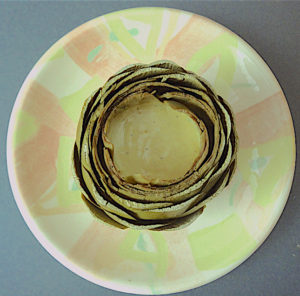
Blend well:
Add and blend until smooth:
Great as a dip for artichokes (pour right into the center of a cooked and cleaned artichoke) or drizzled over steamed asparagus (or served in a small dish on the side). Store any leftover in the refrigerator for one day. Fills 4 large artichokes.
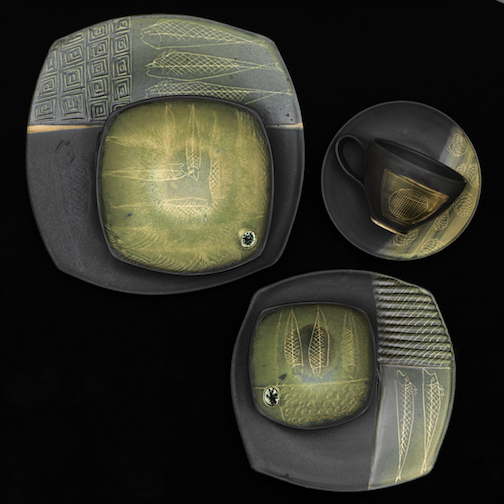
Color is the often the first thing that attracts me to Silvie Granatelli’s porcelain pottery – shiny, vivid turquoise or olive green interiors contrasting with satiny charcoal or deep mossy green exteriors. If it isn’t the color, it is the texture – repeating imprinted or raised linear patterning on the surface – that moves your eye and hands around the pots. This tableware beckons to be held. Sometimes the pots are pierced, sometimes stamped or appliquéd – decorated either by taking away or adding clay. Granatelli’s forms, whether straight-sided or undulating, are articulated and accentuated by both these surface markings and by her glazing choices.
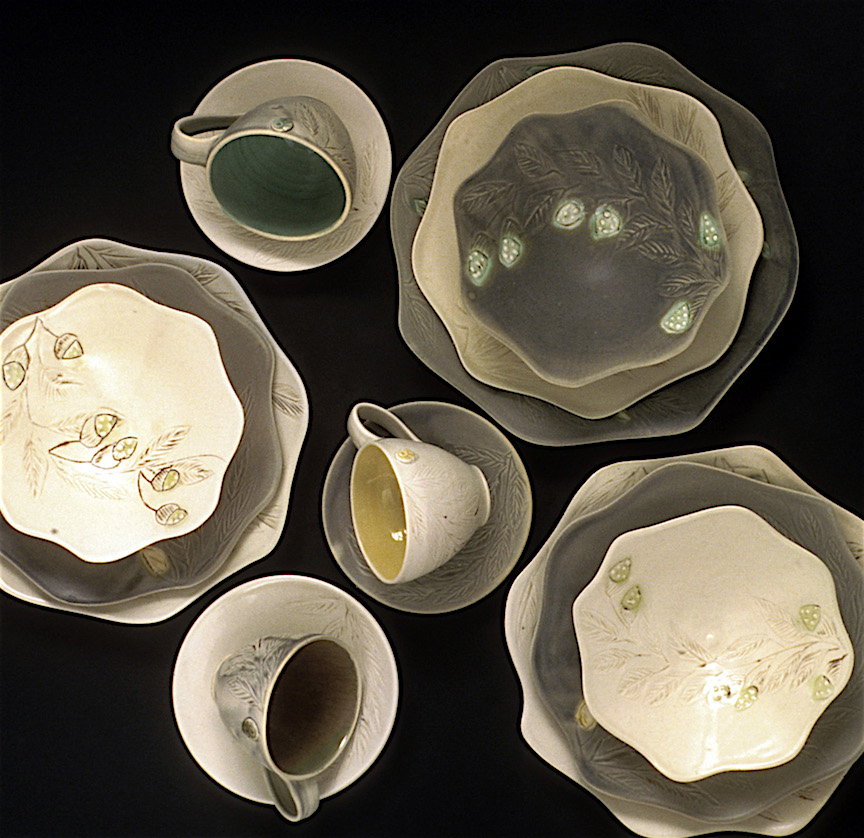
The functional results of her texture and color treatments are pots which are appealing to pick up and use and in which food looks great. Her dinner plates frame whatever is put on them just as her bowls work as a backdrop to flatter everything from plain old cereal to nuts. Granatelli is clear about her intentions. “My pottery is about food presentation. It is made to bring foods to light.” She pays attention to the details that make a pot more comfortable to use – the thickness of a mug’s lip, the position of a handle for ease of lifting, the width of a bowl’s foot to make it sit solidly on a flat surface. Her pieces are not just attractive but also they are well-crafted.
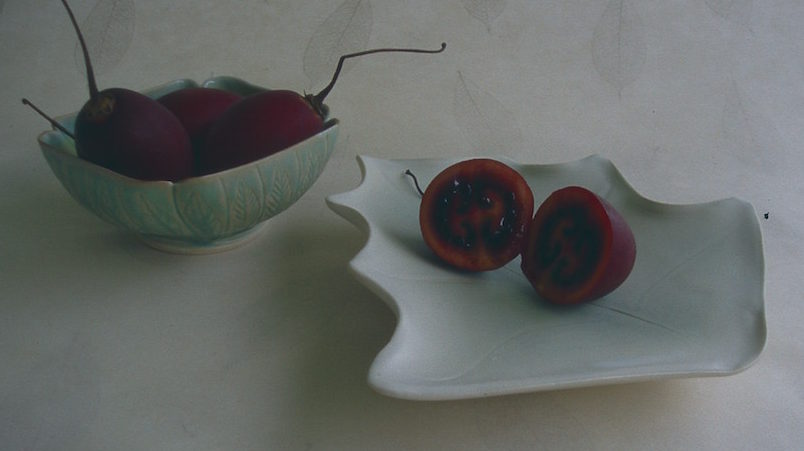
Granatelli thinks about these functional and physical details and about how her work fits into the larger theater of food presentation. “Currently, I am interested in hospitality. Hospitality, which means to give and to receive. I view pottery as a vehicle of hospitality, because a pot gives and receives simultaneously; it is both host and guest.”
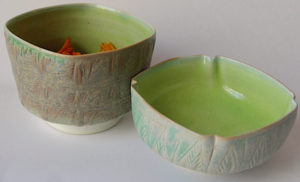
When plating food in my own kitchen, her small pots are some of the pieces I reach for most often. Some of my favorites are carved and stamped bowls lined with a shiny lime green glaze. Sweet potato chips, sesame sticks and even a dollop of hummus look alive in these pots. Other faves are a set of linearly carved bowls with dreamy turquoise interiors that I use for everything from olives to salsa. A side perk of the animated, textured exteriors is that they don’t slip out of my hands so easily.
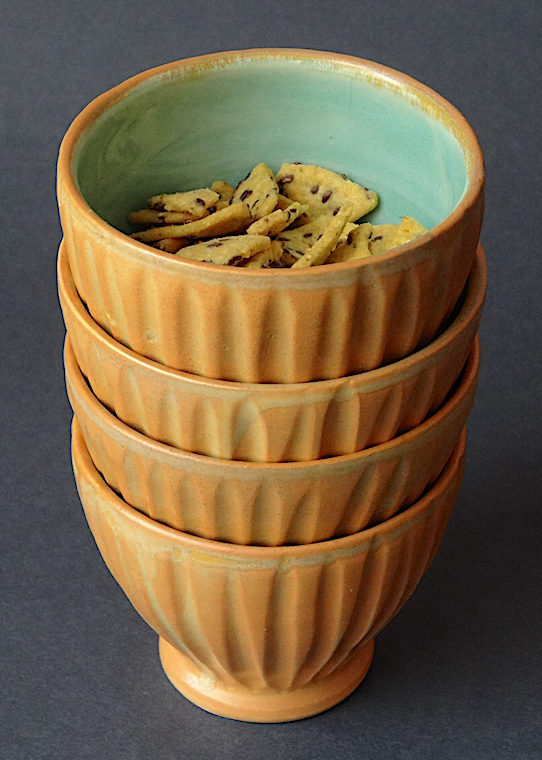
Granatelli lives in the Blue Ridge Mountains, near Floyd, Virginia. For many years she came north to sell her work at the annual Old Church holiday pottery sale (www.tasoc.org/node/871), one of the best places near New York City to buy pots. Now her pieces are for sale during semi-annual self-guided tours of studios in her area of Virginia (http://www.16hands.com), year-round at Troika Contemporary Crafts, a local Floyd gallery (http://troikacrafts.com) or by contacting her directly at her website (http://silviegranatelli.com).
To see Silvie Granatelli at work, check out this short video:

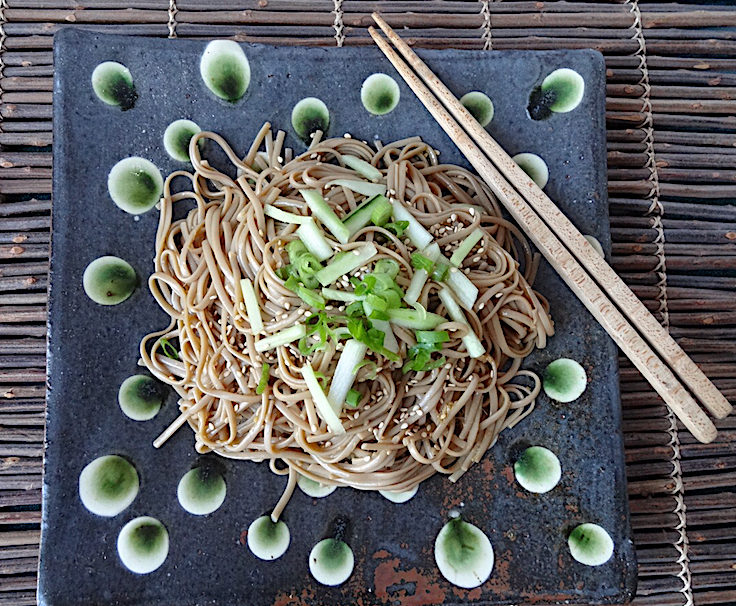
Traditional soba can be very simple – just cooked noodles, cold or warm, served with a dipping sauce. It is found all over Japan in soup, as a salad or with a thick sauce. In New York, we are just learning its culinary range as soba follows ramen as the new, trendy star in soba-centric restaurants and as making your own soba noodles outmodes preparing homemade pasta. A soba dipping sauce or soup base is often dashi, a broth made from seaweed and sometimes bonito (fish) flakes with soy sauce and may be fortified with vinegar, sugar, sesame oil, mushrooms or daikon.
 I rarely have the patience to prepare dashi properly so I have a shorthand method for making soba. My sauce recipe (below) is similar to a savory salad dressing, in which you toss the cooked noodles. Soba noodles are made from buckwheat (which is gluten-free as it is actually a seed and not a grain) often with added wheat flour (because it contains gluten) to make the pasta less fragile. I prefer 100% buckwheat or buckwheat combined
I rarely have the patience to prepare dashi properly so I have a shorthand method for making soba. My sauce recipe (below) is similar to a savory salad dressing, in which you toss the cooked noodles. Soba noodles are made from buckwheat (which is gluten-free as it is actually a seed and not a grain) often with added wheat flour (because it contains gluten) to make the pasta less fragile. I prefer 100% buckwheat or buckwheat combined 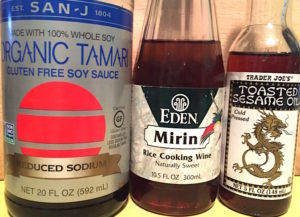 with sweet potato or wild yam (King Soba and Eden are two reliable brands). Why not exclude some wheat when it is easy and tasty? If you don’t care about gluten, any soba noodle will do. The noodles cook very quickly so please pay attention to cooking time and to rinsing with cold water, which is essential to stop the cooking process. You want to retain a firm texture rather than letting them turn to mush, which can happen quickly, so watch and test before you think they might be done.
with sweet potato or wild yam (King Soba and Eden are two reliable brands). Why not exclude some wheat when it is easy and tasty? If you don’t care about gluten, any soba noodle will do. The noodles cook very quickly so please pay attention to cooking time and to rinsing with cold water, which is essential to stop the cooking process. You want to retain a firm texture rather than letting them turn to mush, which can happen quickly, so watch and test before you think they might be done.
Because this recipe is delicious cold or at room temperature, it may be prepared in the morning or the night before and refrigerated until dinner, especially helpful when you don’t want to cook in the heat of a summer day. It is good as a side dish to fish, served with a green vegetable like watercress or broccoli or holds its own as a main course with added tofu or tempeh (easy enough to make but if you are strapped for time, use a package of marinated – Nu Tofu makes a good one) plus a green vegetable. Leftovers hold up very well in a lunchbox and work well for a picnic.
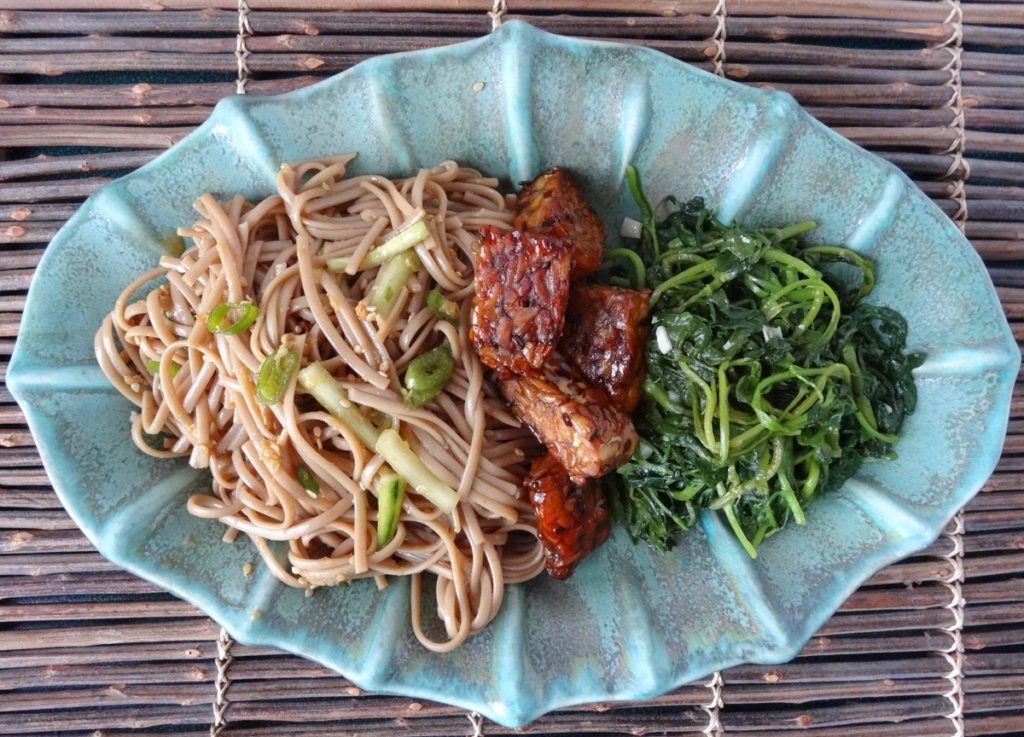
TOSSED SOBA
Bring a large pot of water (3-4 quarts) to a boil. Add the dry kombu (seaweed) and boil 3-4 minutes. Add the unwrapped soba and stir to break the starch bonds, as when preparing any pasta. Cook, stirring occasionally, for 4-5 minutes, checking to see when the noodles are done. Please don’t overcook them. Drain, discard the kombu (if you like it, you can cut up the cooked kombu and add it back in at the end) and rinse the noodles immediately in a colander under cold running water until they are cooled. Do this for 2 reasons – to keep them from sticking and to keep them from drinking up all of the marinade too quickly (hot noodles are hungry noodles – they soak up too much liquid and get bloated).
Soba sauce or dressing:
Mix together in a medium glass or stainless steel bowl:
Add cooled soba and mix well. (You could serve the noodles by themselves with the sauce on the side for dipping)
Cover and refrigerate for at least 2 hours, stirring occasionally to make sure all the noodles are coated.
Garnish with finely sliced scallions, finely sliced cucumber(skin and seeds removed) and a sprinkle of toasted sesame seeds.
To serve as a main course salad, add slices of sautéed or baked tofu or tempeh.
Serves 4-5 as a side dish and 3 as a main course. The recipe is easily doubled or tripled if you are serving a larger group.